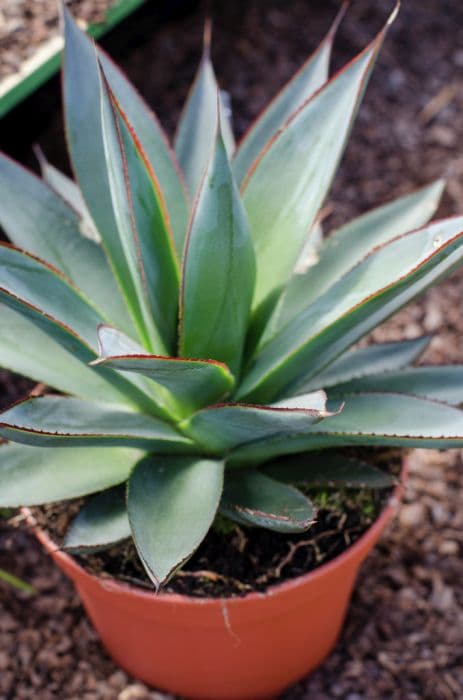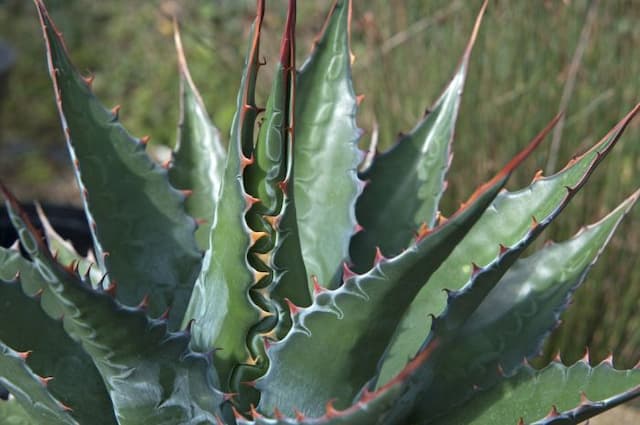Henry's Lily Maianthemum henryi

ABOUT
Maianthemum henryi, commonly known as Henry's Lily, bears a lush and leafy appearance with pointed leaves that often display a glossy texture. The foliage tends to have a rich, green hue, contributing to the plant's overall vibrant appearance. Throughout its blooming period, the plant showcases an array of delicate white flowers, which have a star-like shape and add an elegant contrast to the foliage. As the flowering season progresses, these blooms may give way to small, rounded berries that can change in color from green to red or black, providing visual interest beyond the flowering stage. The berries add a decorative aspect to the plant and attract various types of wildlife. The sturdy stems hold the leaves and flowers aloft, forming an attractive and well-structured plant that adds a layer of texture and color to any garden setting. Henry's Lily brings a subtle charm and a touch of woodland beauty wherever it grows, making it a favored choice for gardeners looking to create a natural and serene ambiance.
About this plant
 Names
NamesFamily
Asparagaceae
Synonyms
Henry's Lily, Henry's Solomon's Seal
Common names
Smilacina henryi, Convallaria henryi, Tovaria henryi, Vagnera henryi
 Toxicity
ToxicityTo humans
Henry's Lily is generally not considered toxic to humans. There is little information available that suggests ingestion of this plant causes harmful effects. However, as with any plant material, individual reactions can vary, so it is always recommended to avoid ingesting plants not intended for consumption.
To pets
Henry's Lily is not commonly listed as a toxic plant to pets such as dogs and cats. However, pets may have individual sensitivities, and ingesting non-food plants can sometimes cause mild gastrointestinal upset. It's always safest to prevent pets from eating decorative plants.
 Characteristics
CharacteristicsLife cycle
Perennials
Foliage type
Deciduous
Color of leaves
Green
Flower color
White
Height
1-2 feet (30-60 cm)
Spread
1-2 feet (30-60 cm)
Plant type
Herb
Hardiness zones
6
Native area
China
Benefits
 General Benefits
General Benefits- Attracts Pollinators: Maianthemum henryi provides nectar and pollen for bees and other pollinating insects.
- Aesthetic Appeal: Its delicate white flowers and lush green foliage add visual interest to shade gardens.
- Habitat Creation: It can provide shelter and food for small wildlife within its native ecosystem.
- Erosion Control: The plant's root system can help stabilize soil and prevent erosion in shaded areas.
- Low Maintenance: Once established, it typically requires minimal care, making it suitable for naturalistic plantings.
- Diversity in Planting: Contributes to biodiversity in a woodland garden or naturalized area.
- Seasonal Interest: Offers spring and early summer blooms, with foliage persisting through the growing season.
 Medical Properties
Medical Properties- This plant is not used for medical purposes.
 Air-purifying Qualities
Air-purifying QualitiesThis plant is not specifically known for air purifying qualities.
 Other Uses
Other Uses- Maianthemum henryi, commonly known as Henry's Lily, can be used as a ground cover in shady garden areas due to its tolerance for low light conditions.
- The vibrant green foliage of Henry's Lily provides a lush backdrop for other flowering plants in a shaded woodland garden.
- Henry's Lily's berries can be used as a natural dye for fabrics, yielding subtle shades of green or blue, depending on the mordant used.
- The plant's sturdy stems can be incorporated into natural crafts or as a structural element in floral arrangements.
- In parts of its native range, Henry's Lily is sometimes used in traditional basket weaving practices.
- Hobbyists may cultivate Henry's Lily for the challenge of growing and propagating an uncommon garden plant.
- Photographers and artists may seek out Henry's Lily for its unique aesthetic and as a subject in nature photography or botanical illustration.
- Educational institutions or conservation programs might use Henry's Lily in teaching about plant biology and the diversity of woodland flora.
- Its ability to adapt to various soil types makes Henry's Lily an ideal candidate for erosion control in suitable climates.
- Garden enthusiasts may use Henry's Lily to attract and support pollinators like bees, which are drawn to its flowers.
Interesting Facts
 Feng Shui
Feng ShuiHenry's Lily is not used in Feng Shui practice.
 Zodiac Sign Compitability
Zodiac Sign CompitabilityHenry's Lily is not used in astrology practice.
 Plant Symbolism
Plant Symbolism- Adaptability: Maianthemum henryi, commonly known as Henry's Lily, often grows in a variety of forest habitats, symbolizing the ability to thrive in different environments.
- Growth: The plant’s steady development from rhizomes to lush foliage and flowers denotes personal growth or expansion.
- Perseverance: Henry's Lily’s capacity to persist through seasonal changes reflects the trait of perseverance.
- Renewal: The cycle of the plant, from dormancy to blooming, represents renewal and the idea that life continues in cycles.
 Water
WaterHenry's Lily requires consistent moisture to thrive, especially during the spring and summer growing months. Water the plant deeply once a week, allowing the soil to become slightly dry between waterings. Depending on climate conditions, you may need to adjust the frequency, but typically, it needs about 1 to 1.5 gallons of water each week. During the fall and winter, when the plant is dormant, reduce watering to every other week or when the soil feels dry to the touch about 2 inches deep. Overwatering can lead to root rot, so it's essential to ensure that the soil drains well and is not left waterlogged.
 Light
LightHenry's Lily prefers dappled shade or partial sunlight, making it an ideal plant for woodland garden settings or shaded borders. It should be placed in a spot that mimics its natural habitat, with filtered light throughout the day. Direct afternoon sun should be avoided, as it can scorch the leaves and stress the plant. Morning sunlight or light shaded by a canopy of larger plants is beneficial for optimal growth.
 Temperature
TemperatureHenry's Lily thrives best in temperatures ranging from 60°F to 75°F during its active growth period. It can tolerate a brief dip down to around 50°F but should be protected from prolonged exposure to temperatures below this range. During the winter dormancy, it can withstand colder temperatures, but it is not frost-hardy and should not be subjected to freezing conditions. The plant's native habitat provides it with a moderate climate, so it does best in similar conditions when cultivated.
 Pruning
PruningPruning Henry's Lily is primarily for aesthetic purposes and to remove any dead or damaged foliage. Deadheading the spent flowers after blooming can encourage more blooms. Prune in late fall or early spring before new growth begins. Generally, it's advisable to prune sparingly to maintain the plant's natural shape and only when necessary. Pruning is not often required, but if needed, it should be done strategically and with care.
 Cleaning
CleaningAs needed
 Soil
SoilHenry's Lily requires well-drained soil rich in organic matter with a pH of 5.5 to 7. A mix of two parts peat moss, one part perlite, and one part pine bark would be ideal to maintain moisture while providing adequate drainage.
 Repotting
RepottingHenry's Lily should be repotted every 2 to 3 years to refresh the soil and accommodate root growth. Repotting should be done in spring before the growing season begins.
 Humidity & Misting
Humidity & MistingHenry's Lily thrives best in moderate to high humidity levels, ideally between 60% to 80%. Avoid placing the plant in excessively dry environments.
 Suitable locations
Suitable locationsIndoor
Place in bright, indirect light with moist soil.
Outdoor
Plant in shaded area with well-draining soil.
Hardiness zone
6-9 USDA
 Life cycle
Life cycleMaianthemum henryi, commonly known as Henry's Solomon's seal, begins its life cycle as a seed, which after a period of dormancy, germinates in moist, humus-rich soil typically in the spring. After germination, it develops into a small seedling with a basic root system and a single stem with few leaves. As the plant matures, it forms an underground rhizome from which new shoots emerge annually, slowly spreading to form colonies. The mature plant produces lance-shaped leaves and in late spring to early summer, small, star-shaped white flowers develop in racemes or clusters. Following pollination, typically by small insects, these flowers develop into small, round, red to black berries which contain seeds that are then dispersed, often by birds, to begin the cycle anew in a new location. Throughout its life cycle, Henry's Solomon's seal undergoes periods of active growth in the spring and summer, followed by senescence in the fall and a state of dormancy during the winter months.
 Propogation
PropogationPropogation time
Spring to summer
Maianthemum henryi, commonly known as Henry's Lily-of-the-Valley, can be propagated through division, which is the most popular method. This process should ideally be carried out in the fall after the plant has finished flowering and has begun to go dormant. To propagate by division, gently dig up the plant, taking care not to damage the root system too extensively. The clumps can then be divided by carefully separating them into smaller sections, ensuring that each new section has at least one or two shoots and a portion of the root system attached. These divisions can be immediately replanted in well-prepared soil, spaced about 12 inches (approximately 30 centimeters) apart, and watered thoroughly to establish the new plants. With proper care, these new plantings will begin to establish and spread, continuing the growth cycle of this elegant woodland perennial.









